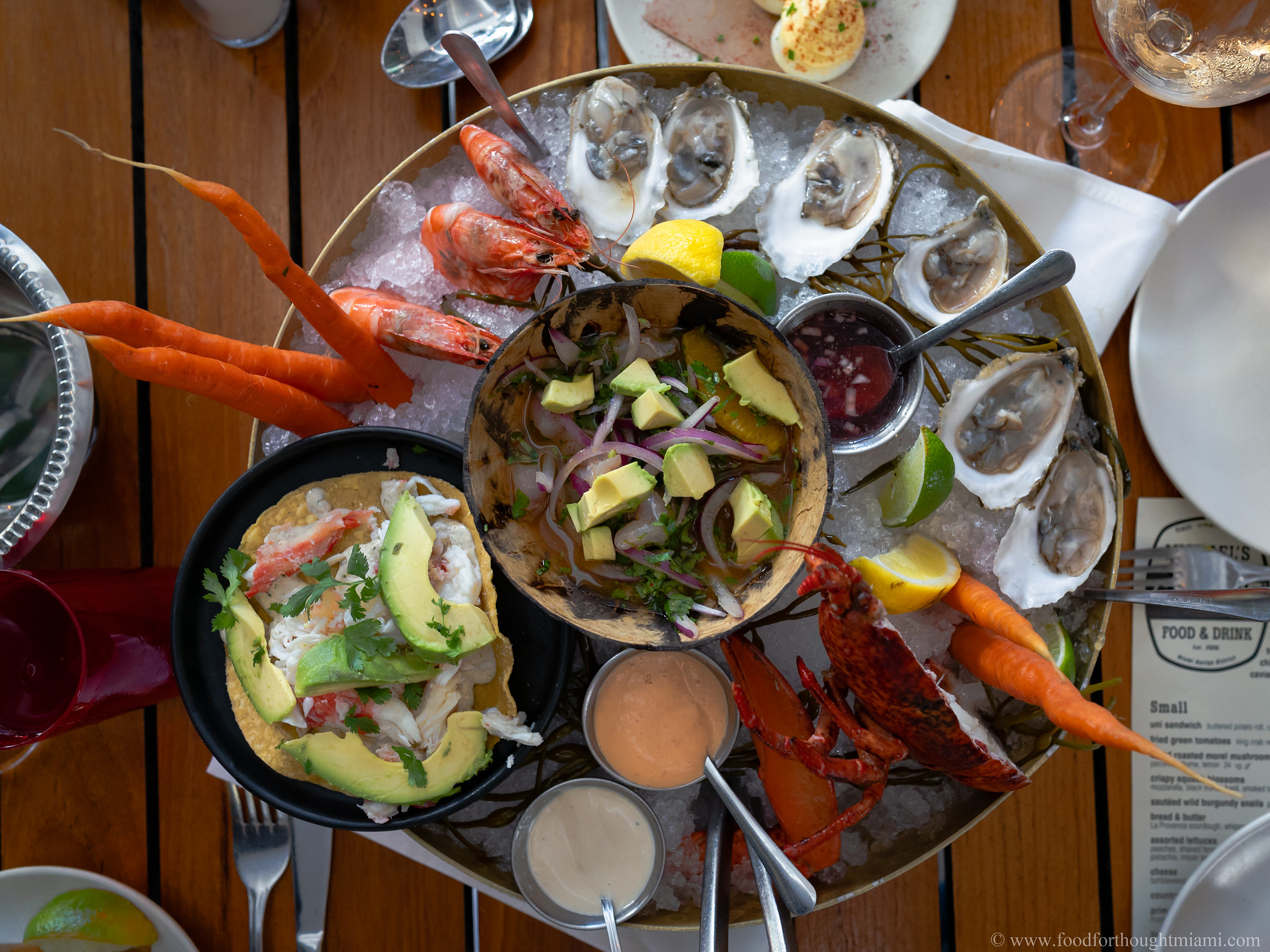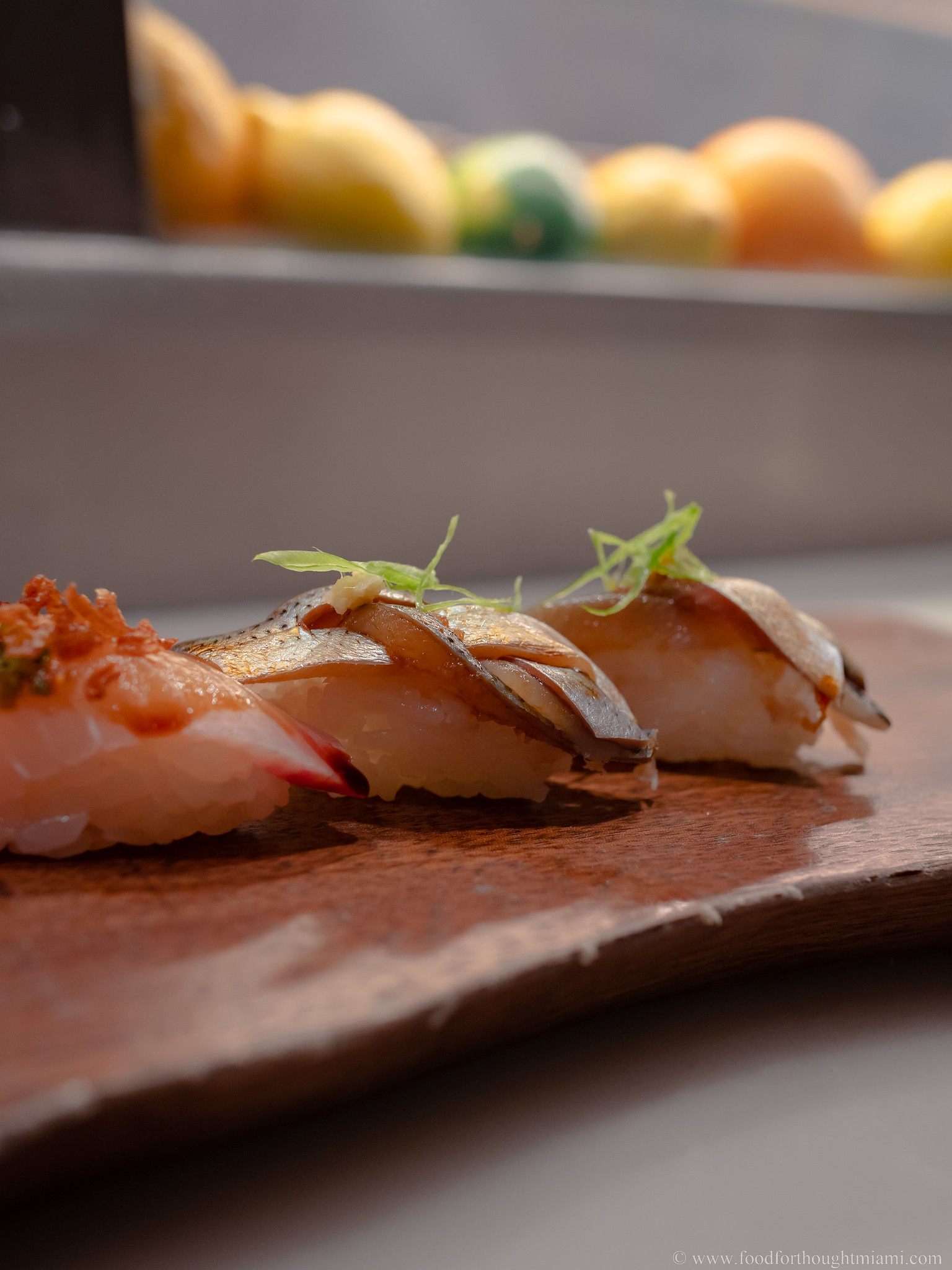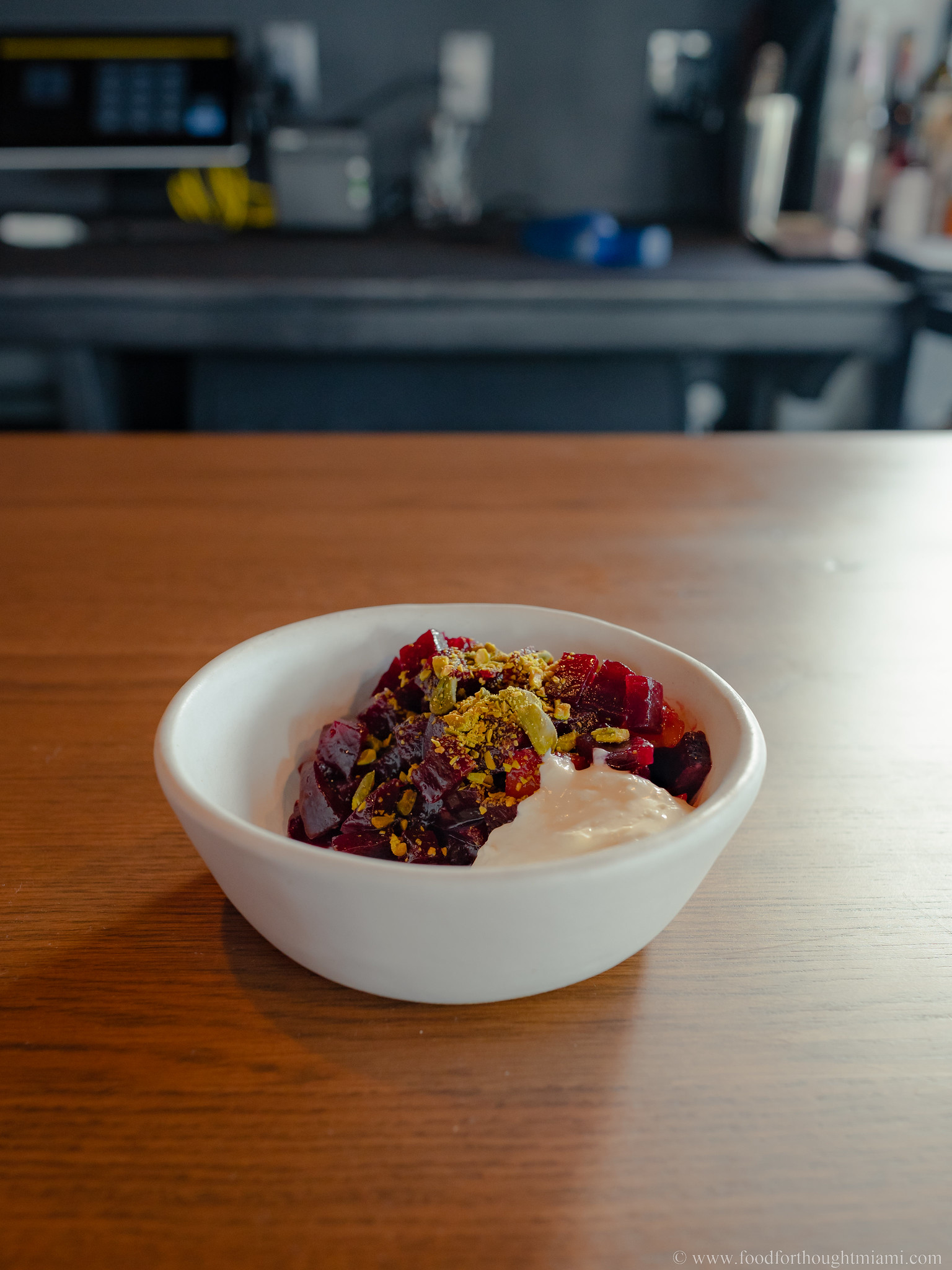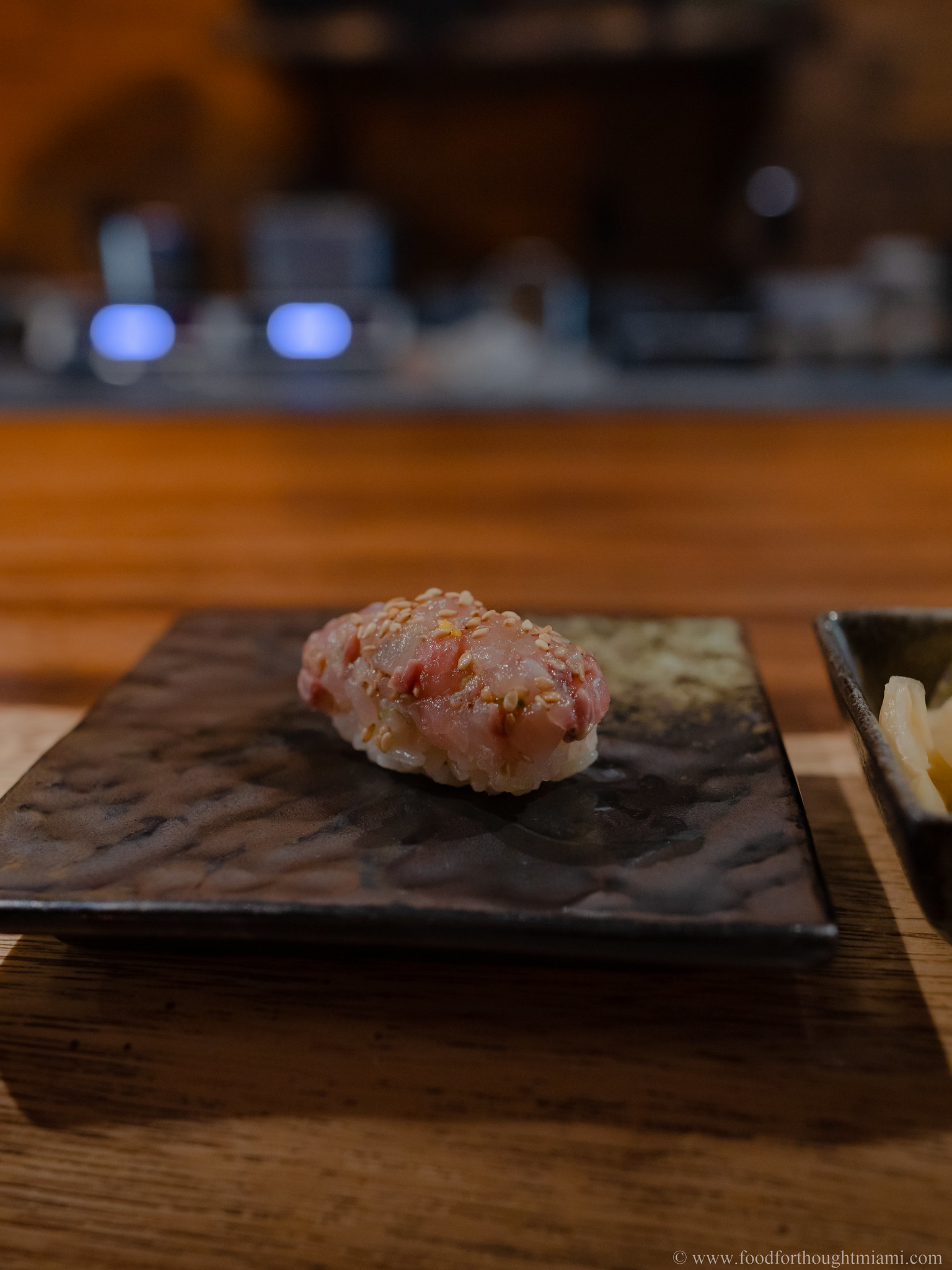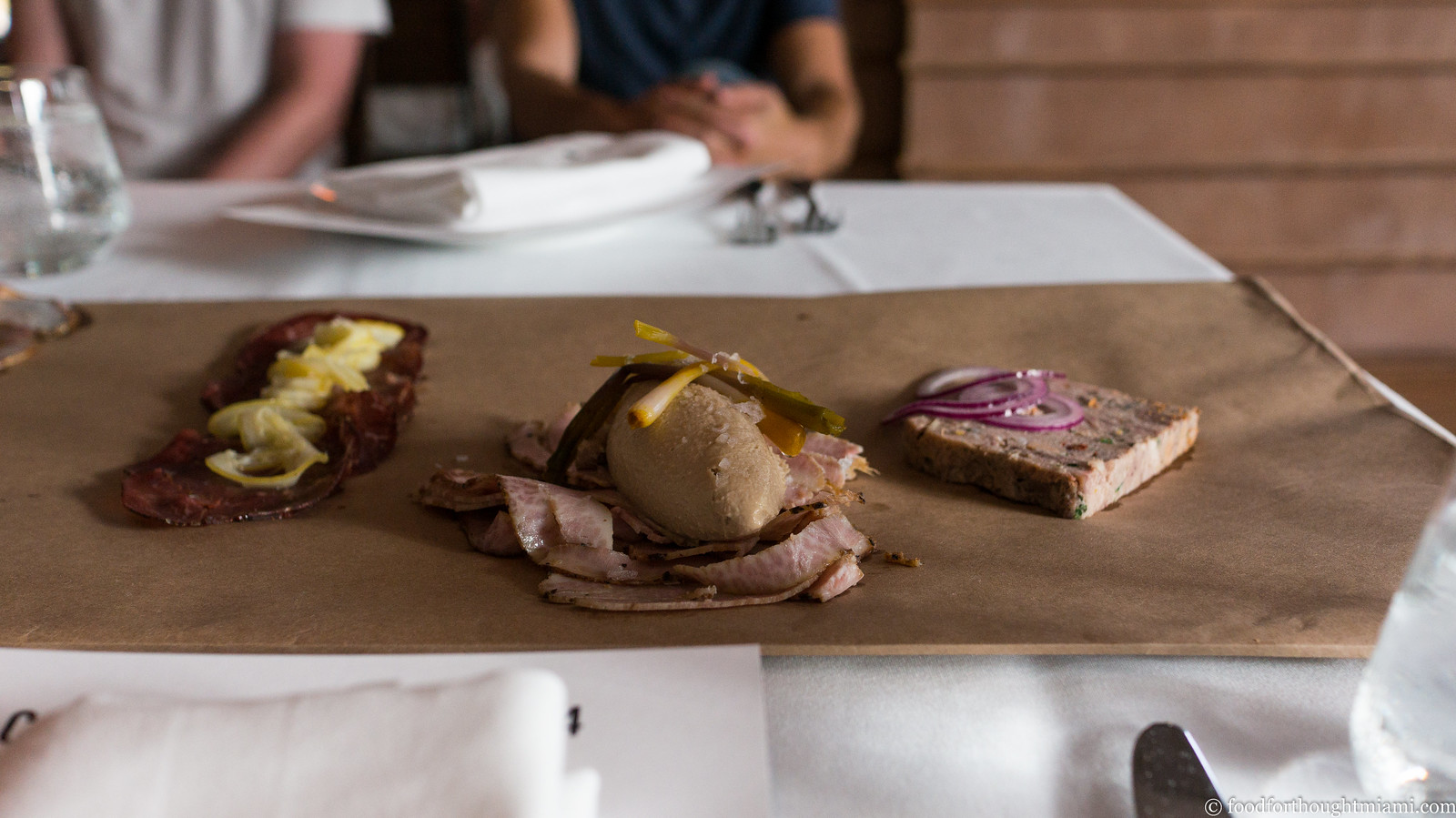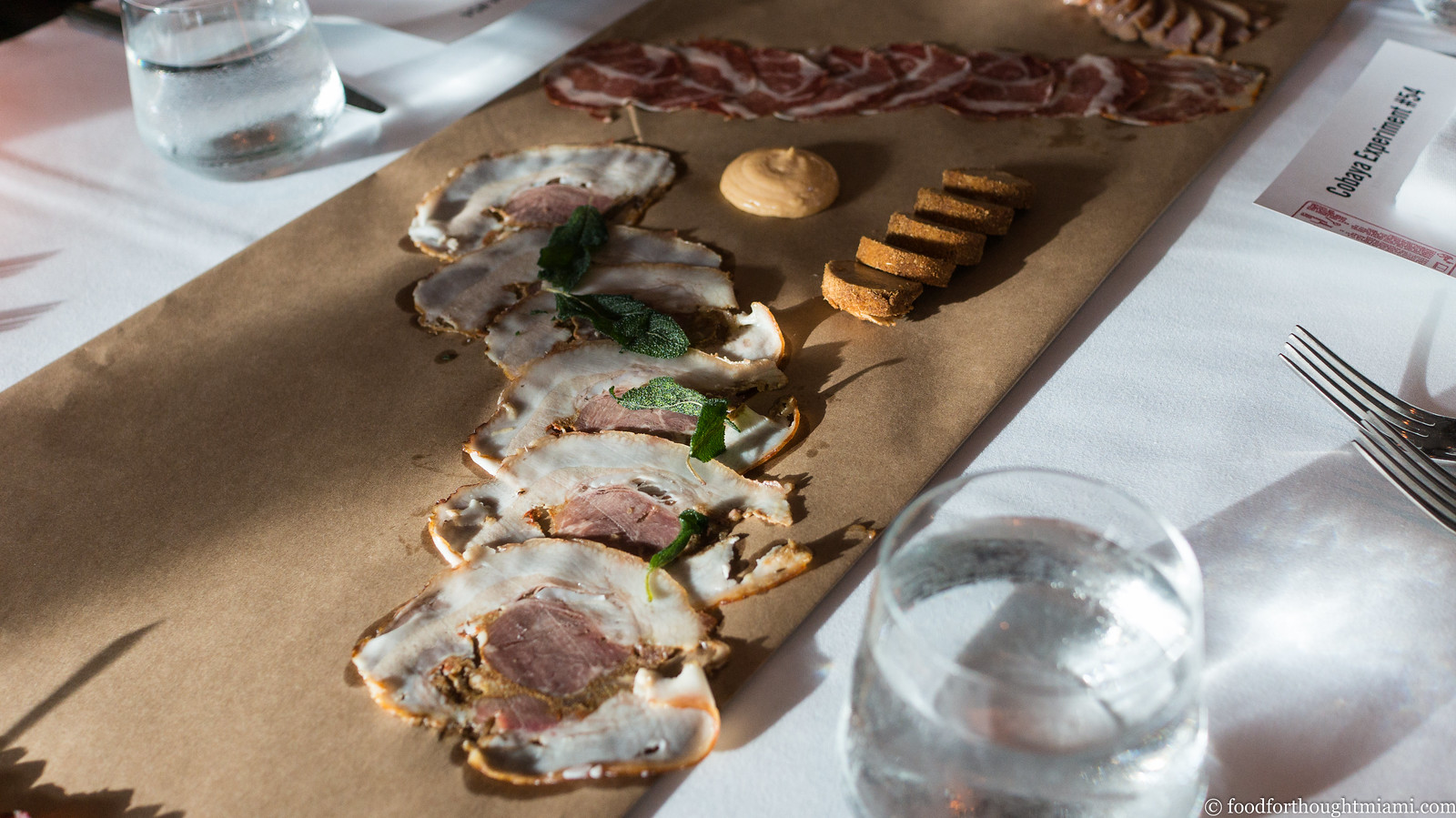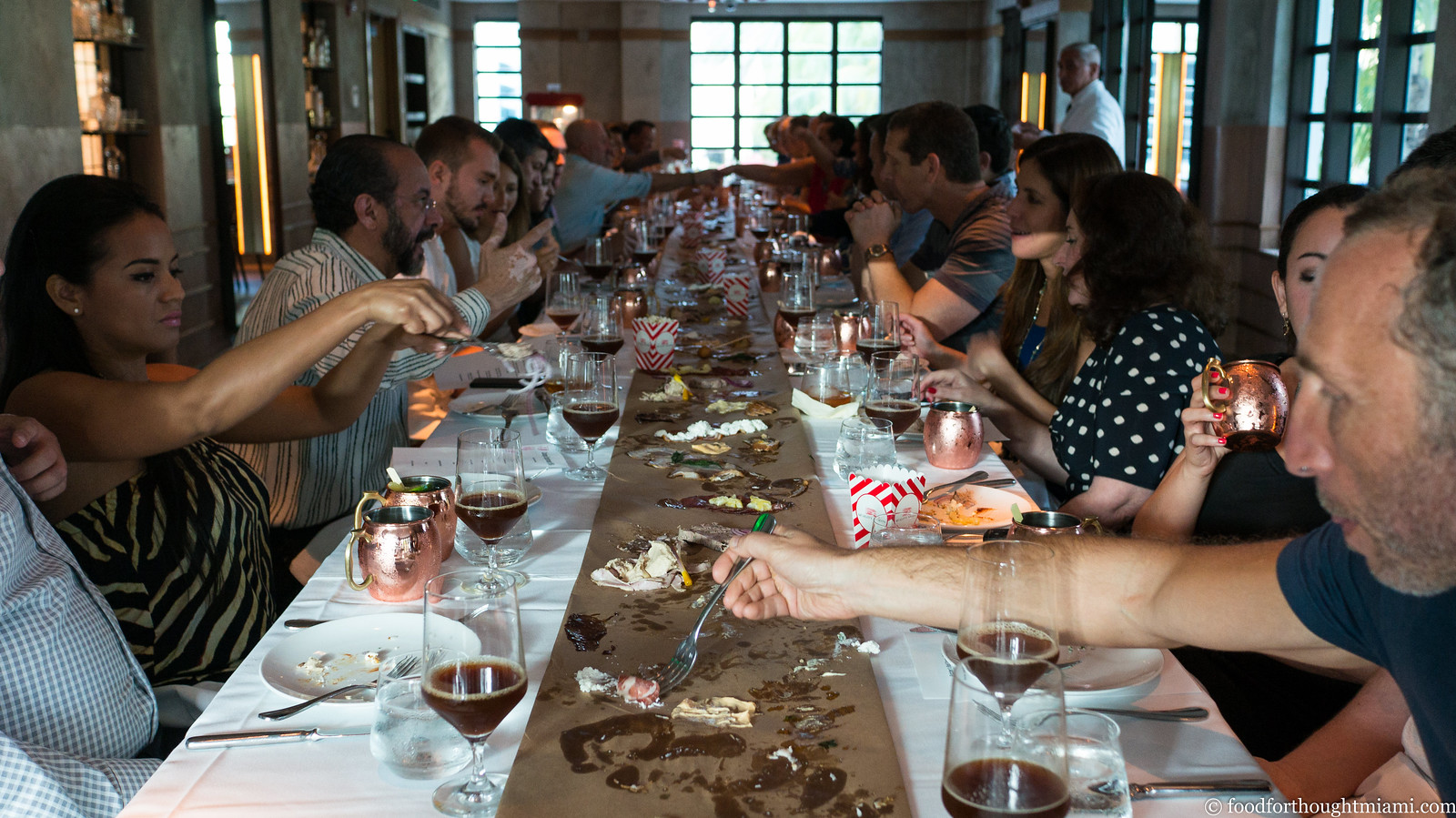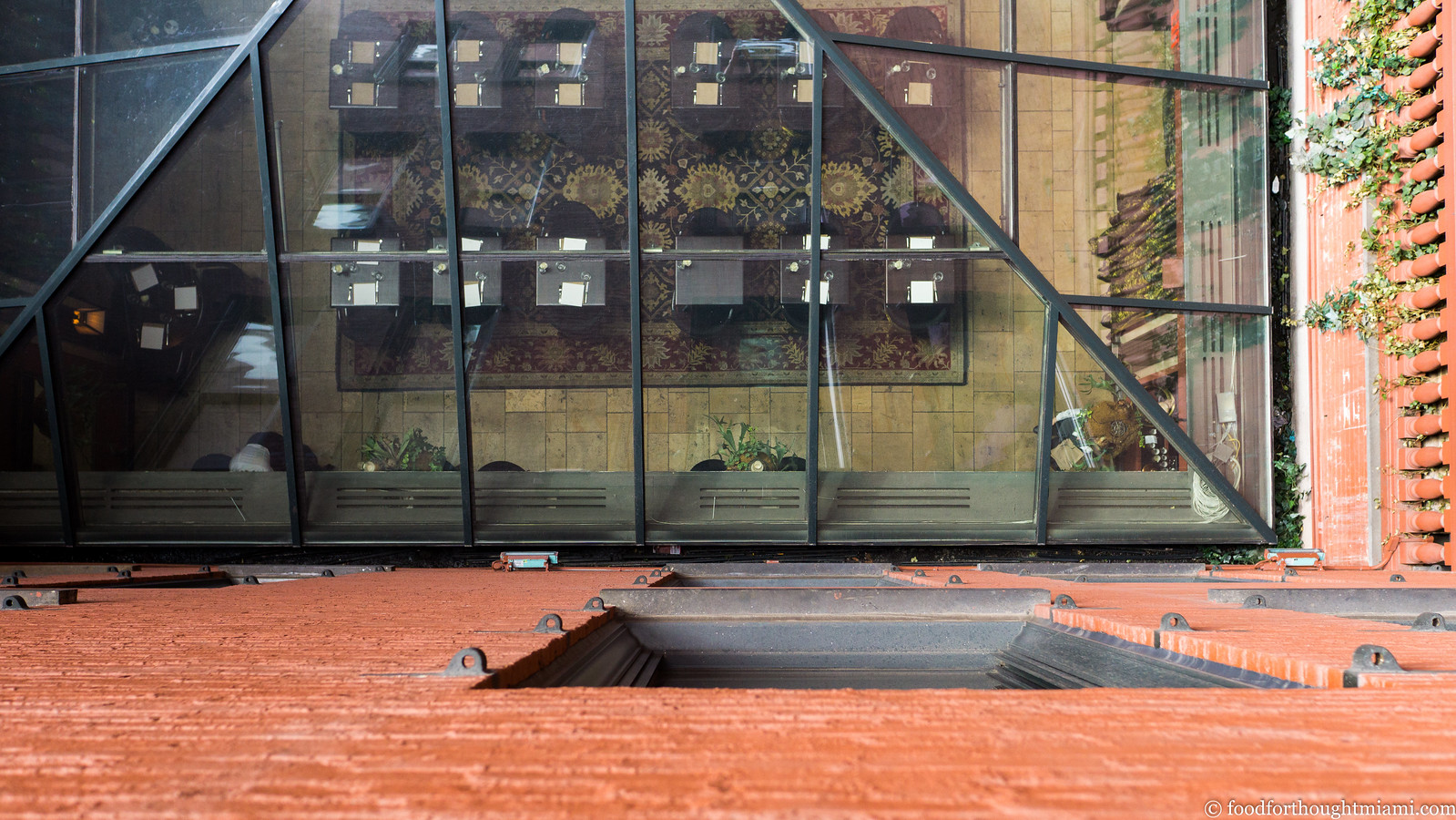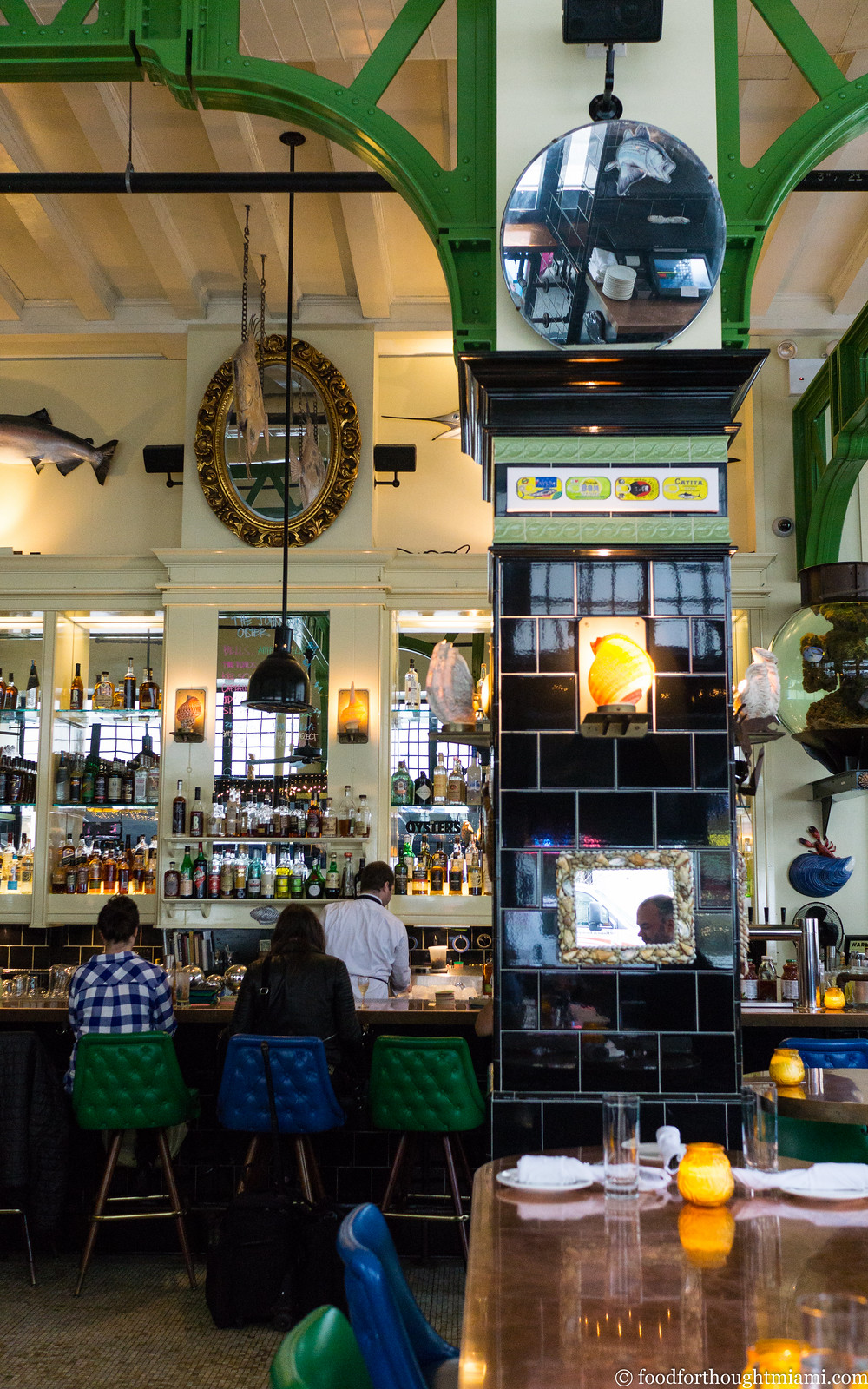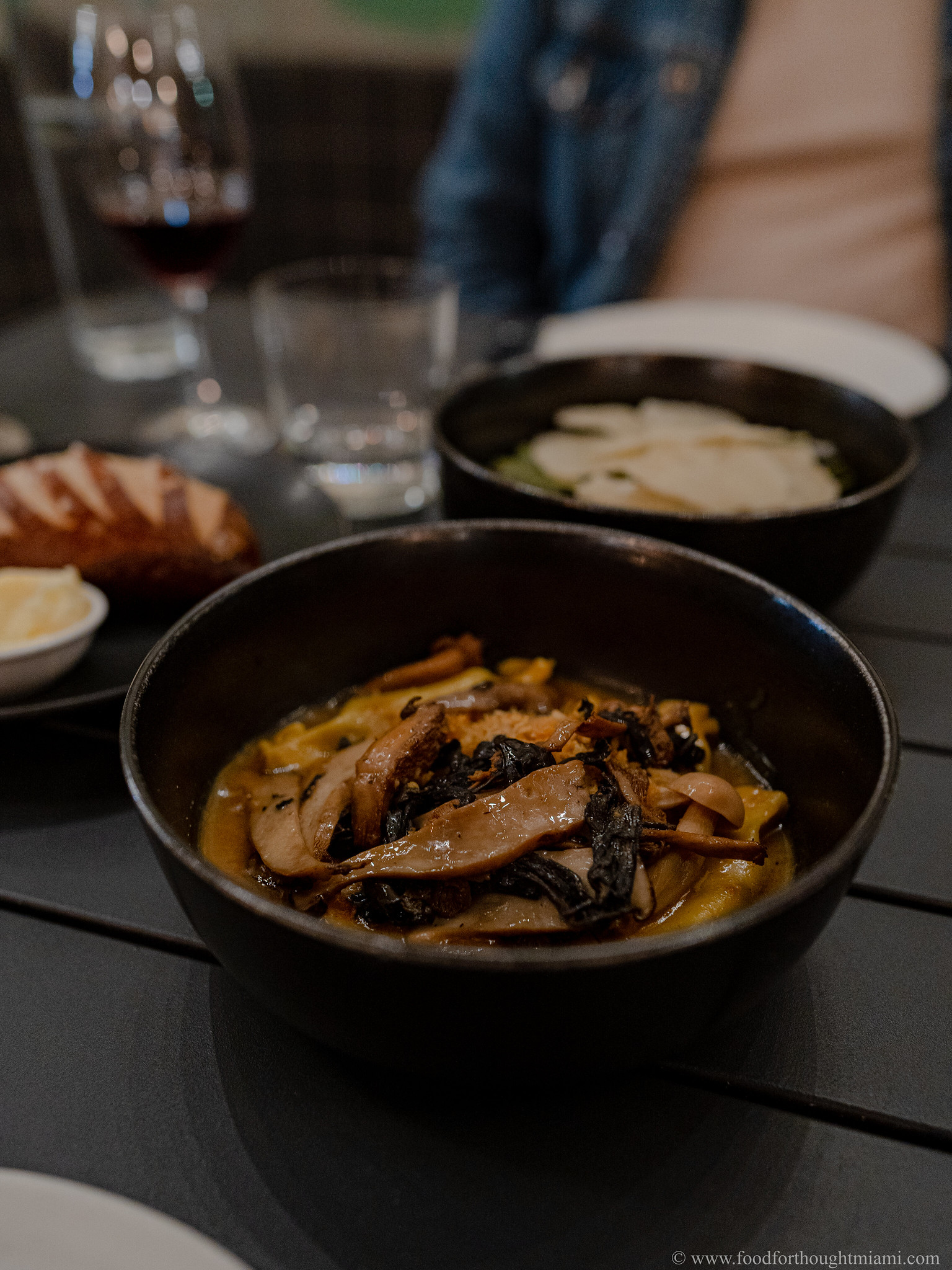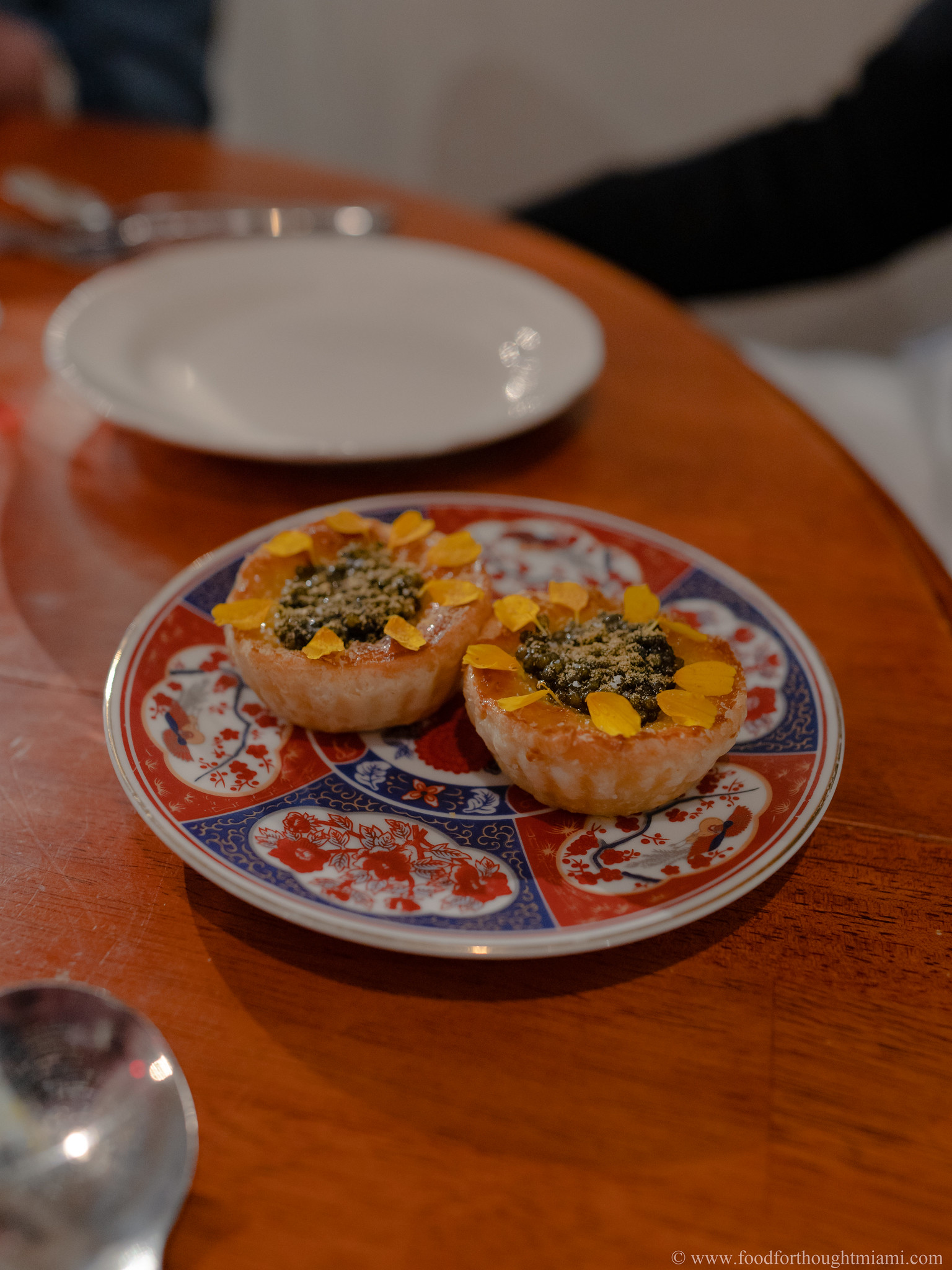Our
experience at é by Jose Andres was the most exceptional of our recent Las Vegas visit, but it certainly wasn't our only good meal. Some like to deride Vegas, including its culinary options, as phony and Disney-esque. And that's understandable: while many big-name chefs have established outposts in the desert - Thomas Keller, Joel Robuchon, Guy Savoy, Pierre Gagnaire, José Andrés, Masa Takayama, among others - they are satellite operations, with perhaps varying degrees of attention and inspiration.
And yet we've always eaten well in Las Vegas, and not necessarily always on a high rollers' budget. Indeed, sometimes you have to get off the Strip and back into the real world to find it, but even in the belly of the beast, there is much good eating to be had. Here, then, some briefer snapshots rather than full posts on some other fine meals we had in Las Vegas:
Sage,
Aburiya Raku,
China Poblano, and
Lotus of Siam.
On our first night in town we were looking for something easily accessible from our home base at the
Cosmopolitan, and Sage, in the
Aria resort next door, fit the bill. Like most Vegas venues, it is a second project of an out-of-town chef, in this instance, Chicago's Shawn McClain (
Green Zebra,
Custom House). On the slow Monday following Christmas weekend, it appeared they had the main dining room closed and were serving only out of the lounge area in front, which was fine by us. With lots of leather settees, dark wood, and soft lighting filtered by pleated lampshades, it was comfortably posh without feeling stuffy. Also nice is that the restaurant is not situated right in the middle of the casino area, and has the feel of a sophisticated, placid refuge from all that hubbub.
(You can see all my pictures in this
Sage - Las Vegas flickr set).
It was just as well we were sitting at the bar, because Sage has an excellent cocktail menu featuring both traditional and contemporary concoctions. Their Sazerac, made with Sazerac Rye, Marilyn Manson Absinthe, and Peychaud's Bitters, was as good as any I've had in New Orleans. They carry an extensive absinthe list and are fully equipped for a traditional service, absinthe fountain and all.
Sage's four-course "
Signature Tasting Menu," at $79, is a relatively good bargain, even if adding the "Foie Gras Brûlée" for a $10 supplement makes it slightly less so.
It's still a good call: this is an excellent, if more than a bit decadent, dish, a rich foie gras mousse topped with crispy burnt sugar crust, a little fruit jam tucked underneath a shower of shaved torchon of foie gras as the final garnish.
The rest of the tasting menu was equally refined, if not quite as exciting. A bacon-wrapped rabbit loin was perfectly cooked, paired with multi-hued roasted baby carrots and herb-flecked, cheese-filled ravioli, but nothing about the dish really jumped out to grab your attention. A pork-on-pork-on-pork composition of Iberico pork loin, pork-stuffed cannelloni, and thin shavings of Creminelli mortadella, served over tender baby eggplant with a dark pan sauce, was every bit as precise with its cooking, with the cannelloni in particular standing out for the lusciously soft but still intensely flavored filling of braised pork shoulder.
This is classy, refined cooking at a very good price point in comparison to many of its neighbors, at least if you go with the tasting menu. Maybe not so much with the regular menu, where appetizer prices hover close to $20 and main courses congregate around $45. If for no other reason, I'd go back just to have a cocktail and another taste of that foie gras brûlée.
Sage
3730 Las Vegas Boulevard S, Las Vegas NV (
Aria Resort)
877.230.2742

I've
written before about
Aburiya Raku and won't do so in great detail again, other than to say that this is easily one of my favorite restaurants in Las Vegas, and if it were in my town I'd be there every week. You can see the photos from our most recent visit in this
Aburiya Raku flickr set. A few favorites from this meal:
Gorgeous kanpachi sashimi off the specials board. The aji was also outstanding.
An unimpressive looking, but deeply satisfying, bowl of uni and wakame soup. A simple combination of dashi, wakame seaweed and a couple pinkish-orange tongues of uni made for a majestic end result. This was umami at its finest: incredible depth of flavor, without any heaviness.
One of my favorite single bites anywhere: Kobe beef tendon robata. Gelatinous, sticky, crispy on the edges, intensely meaty and rich. Great stuff.
Raku is truly an exceptional restaurant and a highlight of any trip to Las Vegas.
Aburiya Raku
5030 W. Spring Mountain Road, Las Vegas NV
702.367.3511
 (continued ...)
(continued ...)





